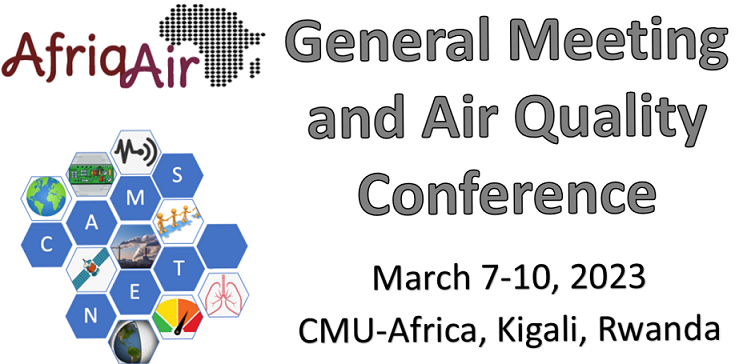Speaker
Description
The rapid population growth coupled with urbanization has caused increase in human activities leading to degradation of air quality in Nairobi. Exposure to air pollution is a leading risk factor associated with premature deaths. The air monitoring campaign conducted in the context of MOPGA (Make Our Planet Great Again) project provided two-year (2020-2021) measurements of PM2.5 and NO2 compounds in Nairobi using Clarity-Node sensors. Six sensors were collocated side-by-side with a BAM-1020 reference-grade monitor (January-April 2021) at the University of Nairobi in order to derive PM2.5 correction factors. Simple linear regression model was used to normalize NO2 data against one low-cost sensor due to lack of a reference instrument. The corrected daily average PM2.5 mass concentrations were largest at KUCC (27.6 µg/𝑚3) urban roadside site, then BuruBuru (26.4 µg/𝑚3) and Marurui (26.3 µg/𝑚3) residential sites, followed by UoN (21.7 µg/𝑚3) and IPA (20.3 µg/𝑚3) urban background sites, and the least was Ngong (17.8 µg/𝑚3) peri-urban site. Furthermore, high PM2.5 values were observed at low wind speeds (< 4 m/s) pointing to local pollution sources. The normalized NO2 measurements showed variabilities in different locations with the highest concentrations (25.6 ppb) at KUCC traffic dominated site and the least (14.4 ppb) at Ngong. PM2.5 diurnal pattern mimicked daily traffic cycle with constantly higher evening peaks compared to morning peaks indicating residential emissions. We are also modeling air quality across East Africa using CHIMERE, which will be combined with the sensor measurements to better understand local and regional sources of air pollution in Nairobi.

